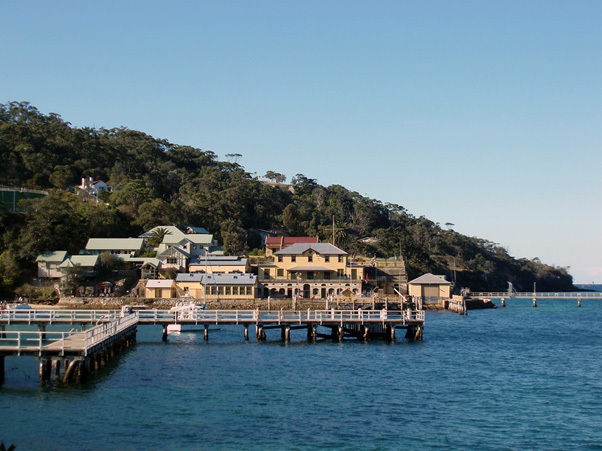Chowder Bay Naval Facilities are highly significant as they are directly associated with the development of Sydney Harbour defences during the latter part of the nineteenth century and World War 2 support activities.
In 1889, Chowder Bay was selected as the site for a Submarine Mining Depot because of the nearby fortifications and accommodation, storage, training and operational facilities were erected. The Mining Corps was responsible for maintaining an electrically triggered minefield within the Harbour as a defence against enemy ships. This “Submarine Mining” was an advanced form of military technology, representing the earliest use of electricity for defence purposes. Mines were strung across the harbour and were operational by 1894 but were never fired in anger. The development of submarines made such minefields redundant and in 1922 the Submarine Mining Corps was disbanded.
Chowder Bay next became a depot and barracks for the Royal Australia Engineers (RAE) until 1939 when it was occupied by the School of Military Engineering’s Anti-Aircraft and Fortress Wing and, from 1943, the School’s Maritime Transport Wing.
Chowder Bay became the Army Maritime School from the 1970s and also trained Royal Australian Navy Midshipman to operate the Landing Craft that were attached to the RAN Troop Carrier HMAS Sydney. The Landing Craft were used to transport Australian troops to/from the ship to Vung Tau harbour during the Vietnam War.
In 1997 the school moved to Townsville and in March 2001 the site was transferred to the Sydney Harbour Federation Trust.
The RAN has maintained a presence in Chowder Bay since 1936 with the location of the Naval Fuel Installation on the site. The main activity carried out at the installation is the bulk storage and distribution of fuel from the two large above ground storage tanks to the fuel wharf. Smaller above ground tanks also exist around the installation and are used to store diesel and firefighting compounds.

Also on the site are three decommissioned World War II Camouflaged fuel tanks which were built in 1942. The tanks were given false roofs to make them resemble adjacent domestic buildings in what was part of the first large-scale use of military camouflage in Australia.
Today, the Harbour Trust continues to maintain Chowder Bay for public enjoyment.
Visitors can engage with local history, experience a rich aquatic habitat, take part in water activities, enjoy nature walks, and dine at local cafes and restaurants.
References:
Chowder Bay Barracks, Australian Heritage Database
Navy Refuelling Depot and Caretakers House, Australian Heritage Database




